The ‘bucketing’ method of money management has been around for decades. But it shot to prominence when self-proclaimed ‘barefoot millionaire’ Scott Pape wrote about how easy it was, by using buckets, to get on top of your spending. But ‘financial bucketing’ is far from limited to the process shared by Scott Pape. ‘Buckets’ can also provide a very simple, handy way of managing retirement income. Here’s our take on ‘buckets’ and what an understanding of them can add to your financial peace of mind.
Back to Scott Pape
He first described his version of spending buckets on a date night with his wife. Apparently she liked it and as he’s now a millionaire, it seems to have worked well. Not everything in life is so simple and not everyone is a best-selling author, but it doesn’t mean we shouldn’t take a look at this simple method.
Buckets for expenditure
Pape recommends that you sort your money into three different spending buckets:
- Bucket One – Household expenses (have-tos)
- Bucket Two – he calls it MOJO and suggests a balance of $2000, we’ll call it ‘safety money’
- Bucket Three – Growth (for longer term wealth through investment)
Pape suggests 100% of your income goes into Bucket One. He then recommends that you spend 60% of this income from Bucket One on essentials, 10% on splurging (treats), 10% to longer-term investments and 20% for ‘fire extinguisher’ matters such as reducing debt, big holidays etc.
This works in theory for those who are still working, supplemented by another ‘grow’ account that represents your compulsory employer-contributed super (currently 11.5% of your salary). So this starts to look unrealistic for retirees who do not usually have high work income nor the ongoing mandatory super contributions.
Let’s rearrange the buckets for retirement
Bucket theory can still be very helpful. Let’s reorganise your spending into four buckets:
- Bucket One – essential household expenses
- Bucket Two – discretionary spending
- Bucket three – money available to invest
- Bucket Four – safety or emergency money (still $2000 if you can manage this)
Reviewing recent spending across these four categories will also help you set a more realistic ongoing budget – one that you can use for retirement income forecasting across your full retirement journey. You may also wish to follow Pape’s method of establishing different bank accounts for the different types of expenditure (or bucket). You can establish automatic deposits to the appropriate accounts from whomever pays you income, be it Centrelink, your super fund, an employer or dividends from share investments.
Income Buckets
Just as grouping different types of expenditure can help you see things more clearly, so can understanding your retirement income in this way, by category.
Typically, most retirees will have between one and four or five different income flows during their retirement. Let’s take a middle income example, where an individual – let’s call him Peter – receives a part-Age Pension, a monthly payment from an Account-Based Pension (from their super), a modest amount from part time work and the occasional share dividend.
This is how Peter’s income buckets might look:
| Bucket One | Bucket Two | Bucket Three | Bucket Four | |
| Total income | Age Pension per annum | Account-Based Super drawdown per annum | Two days per week work income across the year | Total dividends in a typical year |
| $67,800 | $24,000 | $20,000 | $21,600 | $2200 |
These buckets of income are also often referred to as ‘layering’, with the most substantial portion forming the foundation, and other amounts added on top to create a liveable ‘wage’ in retirement.
Again, it may be worth thinking about how your receive these different forms of income. Say your main living expenses are about 60% of your total income, you may wish to pay the Age Pension entitlement and the ABP income into the same ‘essential household expenses’ account and see if that means outgoings match incomings more easily. The work income could then be paid into the discretionary spending account and this can be something you know you can be a little more relaxed about. You may also want to increase your non-essential spending, so may choose to increase your work hours, without becoming concerned you are nibbling into money needed for essentials. And dividends could go into a ‘grow’ account which allows you to make extra contributions to super or you could request a dividend reinvestment plan if available, so that your capital continues to grow.
It’s all about reducing stress
Thinking in terms of ‘buckets’ is helpful because it dramatically simplifies the work required to manage the flow of money in and out of your bank accounts. But, as always, there are rules about what you can and can’t do at a certain age, particularly in regard to super drawdowns or recontributions. This is when seeking relevant advice will help. The above overview aims to encourage you to think in terms of categories of expenditure and income and if there is a way of using automatic credits and debits so that you are not scrabbling to pay bills or spending too long moving money forward and back. The separate ‘safety’ amount of $2000 is also useful to reduce financial stress. If this amount is set apart in a high interest account, you can relax a little more knowing that there is some backup, at least, if money is needed in a hurry.
As mentioned above, the other benefit of understanding the buckets of money coming in, and those used to manage expenditure, will allow you to have a much tighter grip on how much you actually spend on a monthly basis. And of this expenditure, how much was essential and how much was not? And that’s the basis of great financial control. Armed with this information, it is an easy next step to book a Retirement Forecasting consultation where your spending and income can be used to project how well your savings will last for the next 20-30 years. It’s not quite magic, but it is impressive to see your Age Pension entitlements, super income, inflation and likely pension indexation combined ‘in real time’ to create a picture of your financial future.
How do you keep track of your spending?
Have you ever tried the ‘bucket’ method – or something similar?
And what of your income? Does it all land in the one account or do you have different accounts for different purposes?
Those interested in learning more about Scott Pape’s spending buckets can find information here.






This was very helpful than you
Yes, I follow a similar strategy which I monitor monthly. However,
I’m not sure that $2,000 safety amount is enough. I think retirees need a larger amount that is easily accessible as a cash cushion for unexpected emergencies.
I agree $2000 is not nearly enough. A car repair or new oven would blow this in no time. I would prefer 3 months of our salary before retiring at the very minimum. 6 months even better. Makes it easier to sleep at night.
I agree with $2000 as a safety amount is way out dated,I would say put $10000 to 12000 ,example I was doing some travelling last year,my caravan had a water leak appear $7000+accom,while waiting for repairs to happen, $2000 would be no where enough these times.
Thanks for sharing your experience Mick – it is a compelling argument for having access to as high an ’emergency’ fund as you can, within your own set of circumstances, warmest Kaye
We are not retired yet. Hope to semi retire in 2025. Here is our way of thinking – we have 1 home loan split into 2. The 2nd smaller loan has been paid off however we keep just $30 available in that mortgage account this will stop that part of the mortgage loan from being totally cleared and give us access (in emergencies) to the partial amount we have in there. The other part of the mortgage split has been completely paid off We are using this 2nd part as a safety net. The interest on the $30 per month is approximately 0.15c.
We also use the Pope bucket method. What we hope to do before we retire is to be able to have a month’s income buffer in place this would then allow all of the income streams to pop into our bucket account over the 1st month , we will then use the buffer on the 6th week to start to pay ourselves an income each fortnight (we currently get our wages each fortnight therefore by continuing to pay ourselves each fortnight the transition should be very smooth. The buffer acount is then topped up again from the income streams throughout the month, and so it continues each fortnight we pay ourselves.
I also plan to keep our mortgage open for as long as we can. Paid off up to the last couple hundred. That way the redraw is there in an emergency. When we eventually have to close it because the loan time has lapsed then I would want at least 3-6 months of our salaries sitting in an account for emergencies. When it comes to those pesky emergencies how much is ever enough?
Would like to learn more on how and where others keep their emergency money and how much others feel is a good safe amount. So I can work towards saving that before I retire in a few years. Thx
As not all household expenses are incurred on an even basis, we have a separate ‘provisions’ bank account into which we put a fixed amount each month out of our monthly super payment. This covers big ticket items like annual insurances, vehicle licensing costs, unplanned medical costs and household maintenance. When these payments are due or incurred we transfer the funds out of the provision account into our regular expenses account to cover the cost. It takes a bit of analysis to work out how much to put away each month, and then there is managing and monitoring the provision funds and balance, however now that we’ve been running this for a year or so it has become a lot easier to do and we are building up a nice balance in the provisions account (our safety net I guess).
Splitting income is a bit of a headache as it all comes in at different times (fortnightly super, small weekly wage, monthly super from the uk on 3 different dates) but once I had worked out what needed to go where, I now have one account for weekly expenditure, one for monthly/fortnightly direct debits, one for bills that are not paid by direct debit, one for savings and one for MOJO which is equivalent to 3 months income. This seems like a lot of accounts but the first 2 are non-interest earning, the remainder are earning 5.5%. Working well so far!
Thanks for sharing your strategy Carolyn, glad to hear it works well for you!
I had paid out our mortgage many years in advance but kept it open so that in emergency we could draw down if required.we did this several times and quickly repaid it. We even had dividends going into it. When my wife passed away I continued with that strategy. When I finally notified the bank of my wife’s passing (about 18 months after she passed) they locked me out of the account, even though the house had always been in my name only. At the time the account was in substantial credit due to dividends.
It was quite painful to retrieve the money and the bank would not allow the mortgage to be in my name only. It also impacted several insurance policies which had been in joint names.